A Short History of Helston
EARLY HELSTON
Although probably existing as a settlement since the 6th century,
Helston was first `chartered` by King John in 1201.
During its early years it was know as “HENLYS”or “HELLYS” which means `the old court` in Cornish. However, under the Saxon`s the “ton” was added and it was still known as “HENLISTON” when entered in the Domesday Book in 1086.
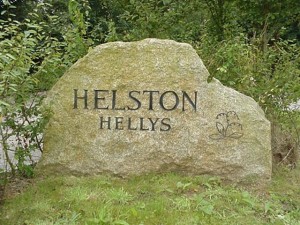
During the reign of Edward I Helston was made a `Stanary Town` for the stamping of tin. `Stannum` was the Roman word for tin but there is evidence that Cornish tin was being worked long before Roman times.
The industry`s code of conduct was enforced by Stannary Courts and one of their main functions was to keep up the purity of tin. Smelted blocks were tested by cutting off a corner (or `coin) after which, if of the correct purity, the surface so exposed was officially stamped. No tin could be sold until this approval was given.
By the 19th century, Helston was a town of assured importance in Cornwall`s far west. It had, in 1861, a population of 8497 with 1683 houses and property value of £10,685. An account of the town at this mid 19th century period is of interest. It refers to the town`s history and then presents this `pen-portrait` of Helston:
`The town has been much improved since the beginning of the century; it is regularly and neatly built and comprises four large streets in cruciform arrangement, with a handsome and spacious market house and town hall at the centre, a police station, church, four disenting chapels, a literary institution and reading room, a dispensary and a workhouse (the latter a stone edifice of the newest design). The town is a seat of petty sessions and a polling place; was made a borough by king John; sent two memebrs to parliament from the time of Elizabeth till the Reform Act but now sends only one member; is governed by a mayor, four aldermen and twelve councillors; has a head post office, three banking offices, one or two good inns and a grammar school. Markets are held on Wednesday and Saturday and fairs several times a year and there is considerable trade done in connection with neighbouring mines`
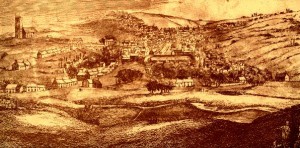
In Elizabeth I reign four stannary or coinage towns were created – HELSTON, Truro, Liskeard and Lostwithiel. Coinage Halls were built and that at Helston stood in the street that now bears its name (Coinagehall Street).
In those early years Helston also had a castle, the site of which is beneath the Bowling Green at the foot of Coinagehall Street. The castle, at one period the residence of Edmund, Earl of Cornwall, was already a ruin by the time of Edward IV for William of Worcester wrote of it then as such.
During the reign of Henry VIII, however, repairs were apparently carried out to both castle and town, the latter having also fallen into a period of decline. At this period Helston was said to have been the place where the symptoms of the Cornish rebellion of 1549 first appeared. From the time of Elizabeth until the Reform Act the Borough sent two members to Parliament.
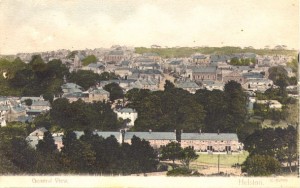
By the 19th century, Helston was a town of assured importance in Cornwall`s far west. It had, in 1861, a population of 8497 with 1683 houses and property value of £10,685. An account of the town at this mid 19th century period is of interest. It refers to the town`s history and then presents this `pen-portrait` of Helston:
`The town has been much improved since the beginning of the century; it is regularly and neatly built and comprises four large streets in cruciform arrangement, with a handsome and spacious market house and town hall at the centre, a police station, church, four disenting chapels, a literary institution and reading room, a dispensary and a workhouse (the latter a stone edifice of the newest design). The town is a seat of petty sessions and a polling place; was made a borough by king John; sent two memebrs to parliament from the time of Elizabeth till the Reform Act but now sends only one member; is governed by a mayor, four aldermen and twelve councillors; has a head post office, three banking offices, one or two good inns and a grammar school. Markets are held on Wednesday and Saturday and fairs several times a year and there is considerable trade done in connection with neighbouring mines`
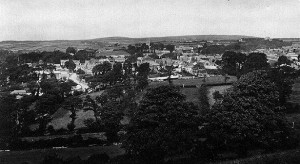
This account, made in the 1860`s, makes no reference to transport which was then only in the form of rather inferior roads. Later in the century, however, Helston was placed on the railway map when a branch line was built from the town for 8.75 miles to a station at Gwinear Road on the main line from Penzance to London. When the line ran into financial difficulties it was taken over by the Great Western Railway (GWR). In its heyday earlier in the 20th century, this little branch line had several trains everyday connecting with London expresses and Helston Station was advertised as a departure point for `road motors` to the Lizard (they ran 3 times a day!). This cheerful little railway has, of course, long since gone though there are physical reminders of it for those who seek them.
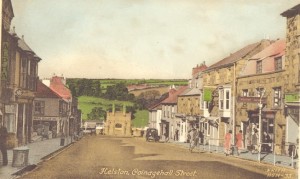
A more recent event of a different kind has been the town`s `twinning` with Sasso Marconi, the Italian town that was Marconi`s birthplace – a reminder that the pioneer worked in this part of Cornwall.
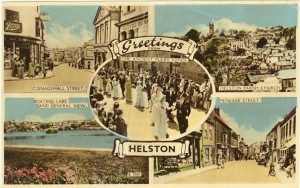
HELSTON TODAY
Modern Helston, considerably more extensive than it`s 19th century predecessor, climbs the hill from the River Cober, a typical grey granite Cornish town set in a background of lush meadows and fields. Its building, even the newer ones, are mostly of granite with grey slates and many quaint but steep alleyways and lanes to intrigue the visitor. It is a busy market and shopping town, an educational centre and a growing place of residence.
WILLIAM FREDERICK IVEY